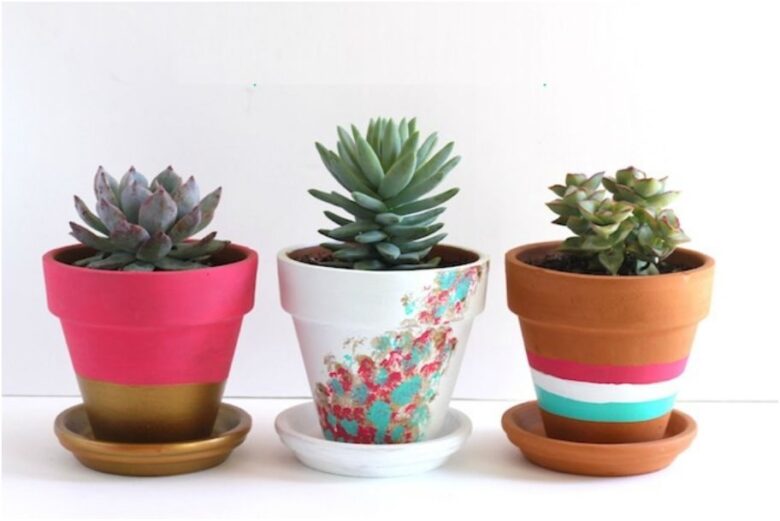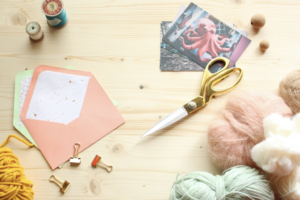As people become more eco-friendly and appreciate the beauty of nature, houseplants are more than just pretty things. They are beloved pets that bring some outdoor fun into your home. In an effort to be more environmentally friendly, many craftsmen enjoy using houseplants in their projects. This article discusses some green craft ideas that combine the love of crafting with houseplants. With these ideas, you can fill your home with creativity and a soothing nature.
1. Lace Plant Hanger with Fringes:
Fringe macramé is the art of creating beautiful patterns by knotting ropes. It is becoming increasingly popular again, especially for making plant hangers. When you make your own macramé plant hanger, you can customise the length, design and style to suit your home decor.
You can add a touch of colour by choosing a power tie in a natural or bright colour. These macramé plant hangers with fringes are both functional and beautiful. You can hang them near a window, on the ceiling or on the wall. They provide a unique and stylish way to display your favourite houseplants.
2. Garden in a Terrarium:
Creating your own terrarium garden is a fun way to display small houseplants and create a small environment. Choose a glass jar or vase and fill it with rocks, activated carbon, soil and art such as pebbles or moss. Choose small plants that are suitable for small spaces, such as succulents or air plants.
Terrarium gardens not only bring the beauty of plants into your home, they also serve as interesting focal points. To make your indoor garden oasis unique, experiment with different container shapes and plant combinations.
3. Plant-Pressed Art:
Making pressed botanical art is a great way to keep your favourite houseplants beautiful. A classic way to make them is to dry the plants and press them between heavy pages, which preserves all the fine details. Once the plants are dry, you can place them on paper or canvas to create unique botanical art.
Botanical art printing allows you to preserve the shape and texture of your houseplants forever and turn them into beautiful works of art. Add a touch of nature to your interior, frame your work and present it as a photo wall or as a standalone piece.
4. Paper Cutting from Potted Plants:
With collage art, you can transform an ordinary clay pot into a unique work of art. To attach the planter, you can use decoupage glue and coloured paper, fabric or even old cards. For a smooth surface, cover the pattern with clear varnish.
A potted plant decoupage is a flexible craft project that allows you to express your own style. You can create an arrangement that looks great by mixing and matching plant designs, colors and varieties. When you decorate these planters, they are no longer just supports; they are works of art that can be used.
5. Herb Garden Logo:
To add a touch of charm to your herb garden, you can make your own herb garden markers. Make craft markers from wood, cork or even repurposed old kitchen tools. Use a waterproof marker or paint to write the name of the herb on each marker to make it permanent.
Herb garden markers are useful and can also make your vegetable garden look better. This allows you to easily distinguish each flower, so you can be sure your food has the right taste.
6. Floating Plant Stand:
You can make a floating plant stand that you can use both to display your houseplants and as a beautiful decorative item. You can hang simple shelves from the ceiling or attach them to walls made of metal or wood. Setting up several potted plants at different heights can create an interesting, vibrant show.
Floating plant stands make the most of vertical space, allowing you to add many plants in a small footprint. Experiment with different shelf layouts and designs to create a unique and eye-catching houseplant display.
7. Plant Resin Coasters:
Place leaves, flowers or twigs from your home plants in resin to create plant coasters that will retain their beauty for a long time. Place the plant part on a flat surface. Pour the glue over it and let it harden. Once dry, you will have a unique plate with an image of your favourite plant.
Botanical resin coasters are not only useful, but they are also beautiful and can start a conversation. Mix and match different types of plants and plastic colours to create a variety of beautiful coasters that will add a touch of nature to your table.
Conclusion:
A fun and different way to combine art with nature is to make green crafts with house plants. Whether you’re interested in the delicate art of macramé, the tiny beauty of a terrarium garden, or the practicality of herb garden markers, adding houseplants to your craft projects is a great way to bring some fresh air into your home.
Let the beauty of the plants in your home inspire your creativity as you begin your green crafting journey. Experiment with different tools, techniques and plant varieties to create unique projects that look great while respecting the beautiful and soothing nature of your home.
Using houseplants in a landscaping project not only makes your home look better, it also puts you in deeper contact with nature. Let your house plants be your inspiration and finished pieces as you enjoy crafting with plants. have fun!
FAQs:
1. How do you choose the right plants for your indoor craft projects, taking into account factors such as size, care requirements, and suitability for different crafting techniques?
When choosing plants for indoor crafting, consider available space, lighting conditions, and your crafting goals. Choose plants that are suitable for indoors, such as succulents, air plants, or small herbs. Also consider the care requirements of each plant so that they thrive in the craft project you choose.
2. Can I use live plants in all the craft ideas mentioned? Or are there alternatives for those who prefer a low-maintenance option?
While living plants add life to craft projects, alternatives such as artificial plants, preserved plants, or high-quality artificial greenery can also be used with little maintenance. These alternatives provide the visual appeal of plants without the need for regular care, making them suitable for those who prefer a more permanent and hassle-free solution.
3. Are there specific crafting techniques or materials I should avoid when working with living plants to ensure their health and longevity?
When working with living plants, avoid using materials that can retain moisture, as this can lead to mould or rot. Pay attention to the planting medium and ensure good drainage. Consider the water needs of each plant and choose a technique that makes watering easy. Also, be careful with glues or finishes, which can damage your plants over time.
4. What are some creative ways to personalise herb garden markers, and are there materials that are best suited for durability in indoor environments?
Personalised herb garden markers can be made with materials such as wood, cork, or even recycled kitchen utensils. Use waterproof markers or paint to mark each mark to ensure waterproof durability. Consider adding decorative elements such as patterns, colours, or even artwork to increase the visual appeal of your personalised spice markers.
5. Can the above production concept be adapted to an apartment or small living space where space is limited for a traditional plant arrangement?
Absolute! The handmade ideas mentioned, such as macramé plant stands with fringes, terrarium gardens and floating plant stands, are versatile and perfect for small living spaces. These projects maximise vertical space and allow you to introduce greenery without sacrificing floor space. Consider compact plant varieties and space-saving designs to adapt these craft ideas to an apartment or small living space.


